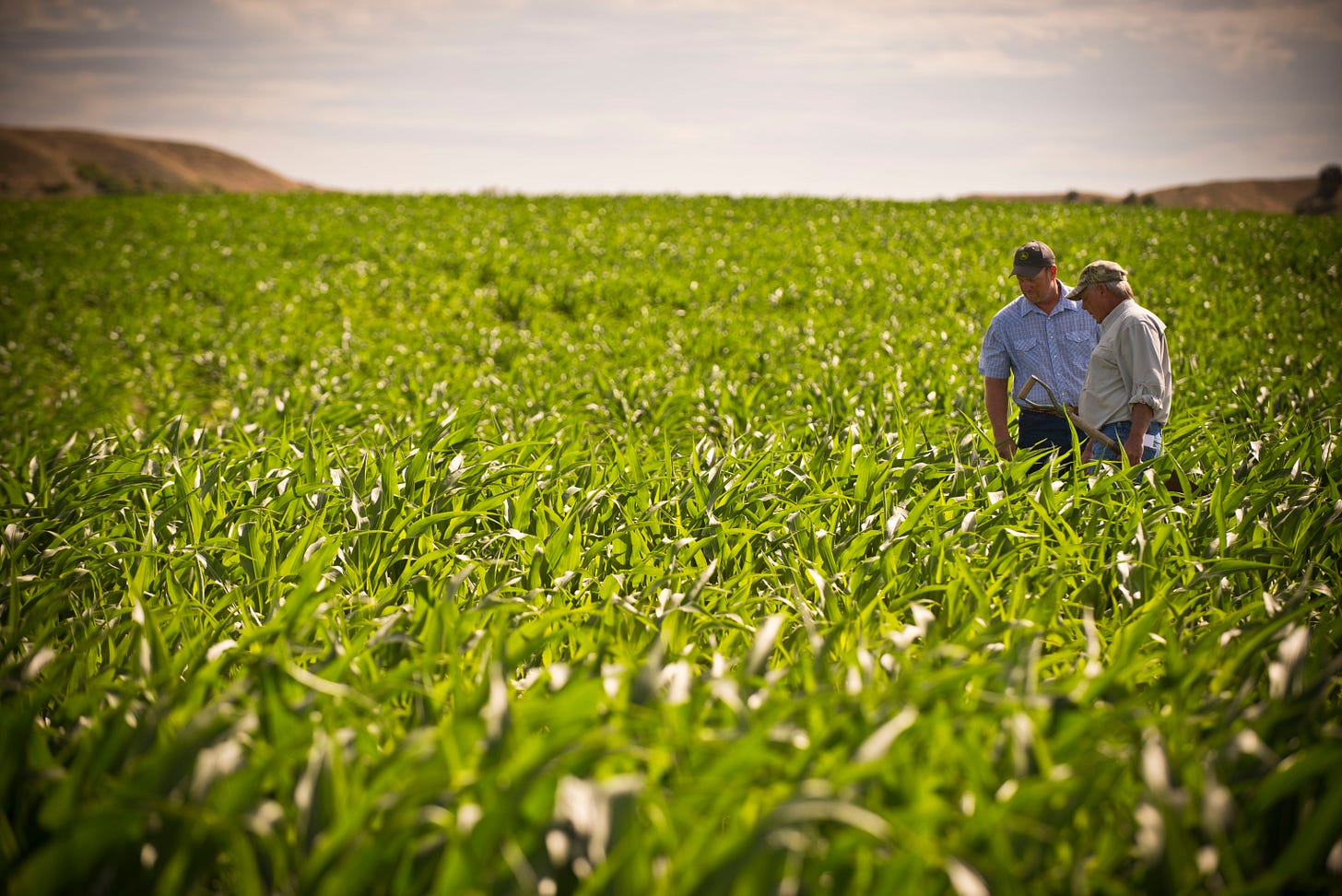Reaping What You Sow
How rural voters have voted away one of their largest markets, and really, what is a tariff anyway?
Times are Changing
Over the past 25 years or so, a subtle shift has occurred in the global agricultural market. Foreign direct influence in South American countries has provided the capital and consumer base needed to jump-start the production of soybeans, cattle, and corn. Take, for example, Brazil, which, alongside U.S. farmers, has accounted for about 80% of the global soybean sales. The other side of the triangle, China imports about 60% of total soybean sales every year and used to be one of the largest buyers of American-grown soybeans. In 2013, Brazil surpassed domestic soybean production, and since then, due to political unrest, BRICS partnerships, and more favorable growing conditions, the country has continued to gain the lead.
In 2018, then-President Trump began imposing tariffs on China, citing intellectual theft and unfair trade practices, which started a trade war that has continued to this day. This led to a nearly 44% decrease in American soybean exports to China, and since then, China’s soybean purchases from the U.S. have never recovered to pre-2018 levels.
For years, China has followed a strict pattern when creating purchase orders for soybeans, the American Soybean Association wrote:
“China effectively halts its U.S. soybean orders as soon as Brazil’s harvest comes online in February. After which point, China purchases soybeans exclusively from Brazilian originators until Brazil runs out of exportable soybeans around September, if the country faces logistics challenges, or if a cheaper U.S. crop hits the market earlier than usual.” - Soybeans Without a Buyer: The Export Gap Hurting U.S. Farms
So, how are orders shaping up now that the American harvest is underway and is expected to wrap up in early November? According to the most recent FDA report, as of September 18, 2025, China has placed exactly zero orders. For context, at this point last year, Chinese buyers had already locked in 6.5 million metric tons.
SOYBEANS MARKETING YEAR 09/01 - 08/31
OUTSTANDING EXPORT SALES AND EXPORTS BY COUNTRY, REGION AND MARKETING YEAR
1000 METRIC TONS AS OF September 18 2025
--------------------------------------------------------------------------------
: CURRENT MARKETING YEAR :NEXT MARKETING YEAR
---------------------------------------------------------
:OUTSTANDING SALES:ACCUMULATED EXPORTS: OUTSTANDING SALES
---------------------------------------------------------
DESTINATION :THIS WEEK: YR AGO:THIS WEEK: YR AGO :SECOND YR:
--------------------------------------------------------------------------------
:
CHINA : 0.0 6513.2 0.0 299.1 0.0 0.0Soy China
In June 2025, the USDA’s Brazilian office released a report outlining a deepening partnership between Brazil and China, branded as the Soy China initiative. The move marks yet another Chinese advance into South America’s sphere of influence. Under the plan, Beijing will allocate new funds to Brazil to enhance health and environmental standards for soybean production to Chinese specifications, and, most significantly, establish a direct sales pipeline from Brazilian growers to the Chinese mainland.
“this production line could boost Brazilian soybean market dominance while directly challenging U.S. exports.” - USDA Assessment of Soy China Initiative in Brazil
The Soy China initiative is an agricultural program and a long-term geopolitical maneuver. By strengthening Brazil’s production capacity and tying it directly to Chinese demand, the partnership threatens to undercut already dwindling U.S. influence in both trade negotiations and global soybean pricing.
Soybean Sell-Out
A sneaky AP photographer was able to snap a picture of U.S. Treasury Secretary Scott Bessent’s phone, in which he was reading a text from U.S. Agriculture Secretary Brooke Rollins.
“the Argentine’s are removing their export tariffs on grains, reducing their price, and sold a bunch of soybeans to China, at a time when we would normally be selling to China. Soy prices are dropping further because of it. This gives China more leverage on us.” - Brooke Rollins in text to Scott Bessent
The deal came as a backstab to American soybean farmers, so quickly after Bessent and Trump finalized a $20 billion currency swap line to assist Argentine President Javier Milei, who is seeking to stay in power since elections begin this October, and the Argentine economy is in free fall.
Bailout
In the face of the soybean fiasco, our deal-maker-in-chief has been strangely quiet, a rare silence that makes sense once you consider how heavily U.S. tariffs have distorted the export market. The administration itself avoids saying the obvious: tariffs function as import taxes. Still, Trump prefers to emphasize a different story. He regularly touts the amount of money these tariffs have supposedly generated, sidestepping the cost of trade. And just recently, in a Truth Social post, he promised relief for the very farmers who were hit hardest by those same policies.
We’ve made so much money on Tariffs, that we are going to take a small portion of that money, and help our Farmers. - Trump on Truth Social
It always feels good, in that twisted Washington sense, to watch money purposefully stripped from U.S. citizens through a senseless trade war with half the globe, only to be funneled right back into subsidies for the very farmers who demanded the war in the first place. The circle completes itself: tariffs drain the market, farmers cry foul, and taxpayer dollars are used to patch the wounds. All the while, the administration and its voters clap like seals and call it a victory.
In the end, the soybean saga isn’t just about tariffs, trade wars, or foreign influence; it displays the self-inflicted wounds of an ill-informed voter. The same farmers who cheered for tariffs are now lining up for subsidies, trapped in a cycle of pain they voted for. China buys from Brazil, Argentina cuts deals after pilfering our coffers, and the U.S. government raids its own citizens’ pockets to paper over the losses. Call it loyalty, call it short-sightedness (call it a cult), but the truth is stark: Republican farmers voted for their own demise, and they have no one to blame but themselves.



